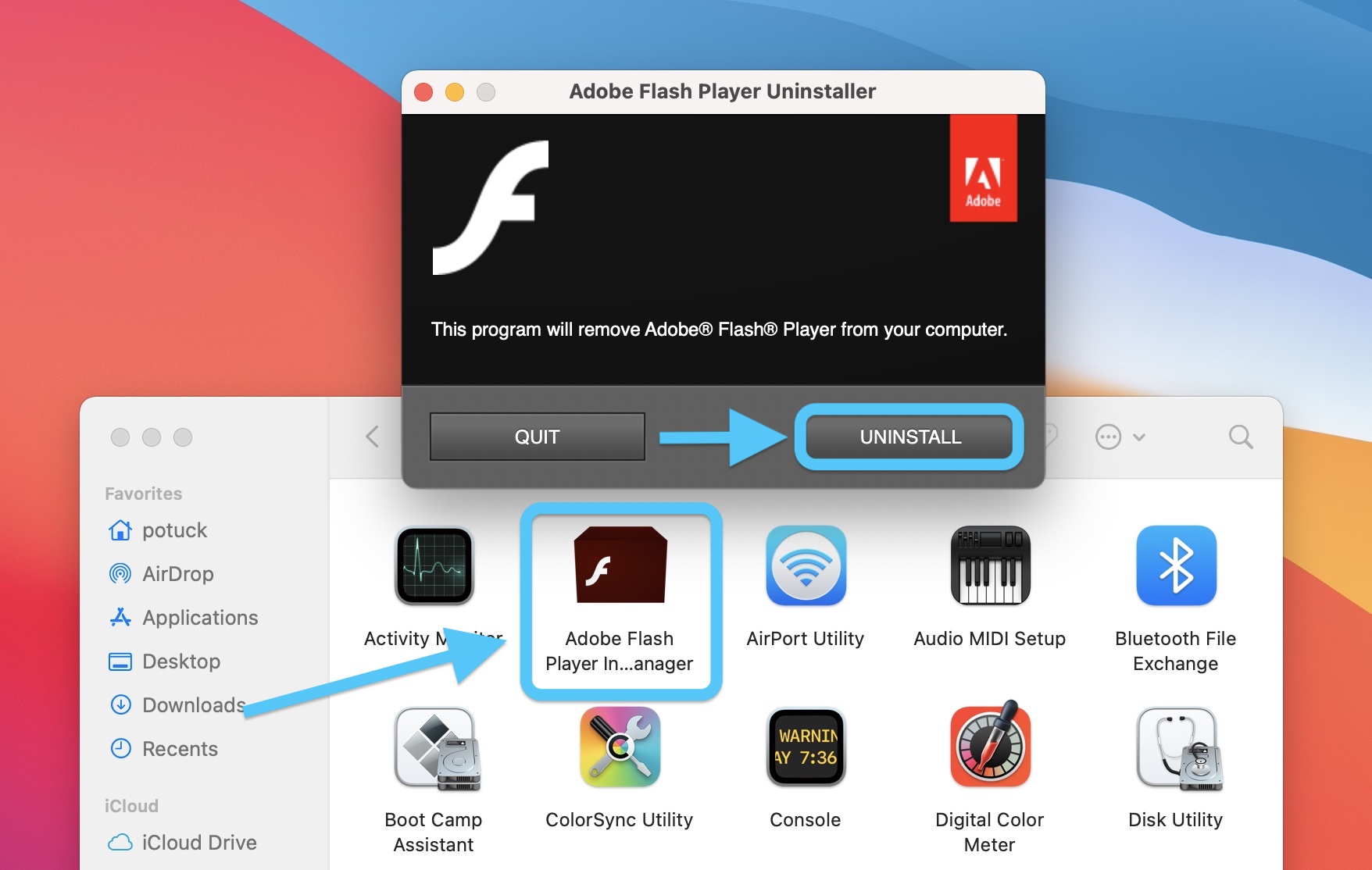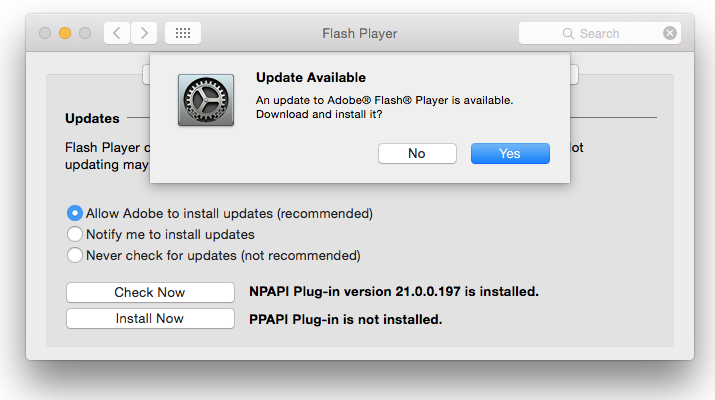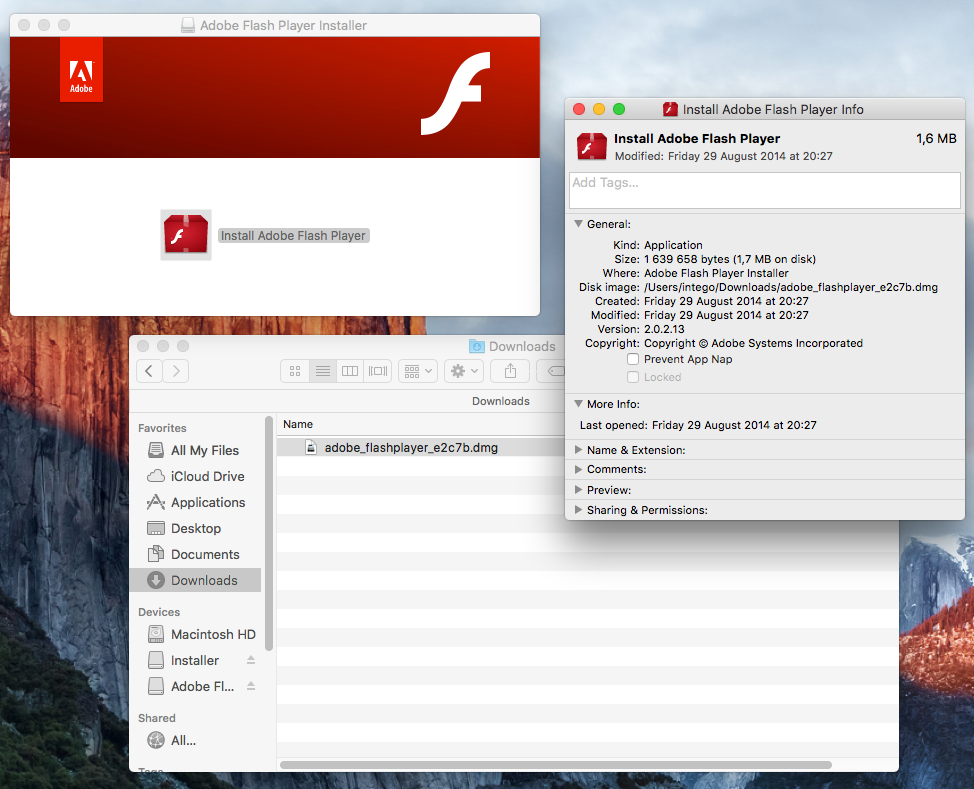

Mac: app data/Macromedia/Flash Player/#Security/FlashPlayerTrustĮxample, /Users/JohnD/Library/Preferences/Macromedia/Flash Player/#Security/FlashPlayerTrust) The Show hidden files and folders radio button.
#Flash player for mac security windows
To show hidden folders and files, select MyĬomputer to open Windows Explorer, select Tools > Folder Player\#Security\FlashPlayerTrust on Windows XP or C:\Users\JohnD\AppData\Roaming\Macromedia\Flash Player\#Security\FlashPlayerTrust Windows: app data\Macromedia\Flash Player\#Security\FlashPlayerTrustĮxample, C:\Documents and Settings\JohnD\Application Data\Macromedia\Flash Locations (locations are specific to the current user): Same directory as the shared object storage area, in the following A user designates a fileĪs trusted in the User Flash Player Trust directory, which is in Load data from anywhere, remote or local. They can interact with any other SWF files, and they can These SWF files are assigned to the local-trusted

Users and installer applications can register specified local There are also Flash Player Trust directories for individual Both administrative users and installer applicationsĬan designate trusted local applications using the Global Flash Is included for the purpose of installer applications granting trust Unlike the mms.cfg file, the Global Flash Player Trust directory Installer application must be run by a user with administrative
#Flash player for mac security full
Granting full privileges to the file that you are distributing. Installer application, you can have the installer application addĪ configuration file to the Global Flash Player Trust directory, cfg fileĪs a developer distributing a locally run SWF file through an To avoid conflicts, give each trust configuration file a filenameĬorresponding to the installing application, and use a. Any HTTP path in a trust configurationįile is ignored only local files can be trusted. The paths listed in a trust configuration file should alwaysīe local paths or SMB network paths. # Trust files in the following directories:Ĭ:\Documents and Settings\All Users\Documents\SampleApp Text grants trusted status to all files in the specified directory The Flash Player Trust directory can contain any number of textįiles, each of which lists trusted paths, with one path per line.Įach path can be an individual SWF file, HTML file, or directory.Ī Flash Player trust configuration file containing the following Trust directory, in the following location:Įxample, C:\WINDOWS\system32\Macromed\Flash\FlashPlayerTrust)Įxample, /Library/Application Support/Macromedia/FlashPlayerTrust) Files are designated as trusted in the Global Flash Player They can interact withĪny other SWF files, and they can load data from anywhere, remote These SWF filesĪre assigned to the local-trusted sandbox. Specified local SWF files as trusted for all users. Use the standard techniques provided by your operating system to hide or otherwise prevent end users from seeing or modifying the mms.cfg file on their systems.įor more information about the mms.cfg file, see the Flash PlayerĪdministrative users and installer applications can register You might use third-party administration tools, such as Microsoft System Management Server, to replicate the configuration file to the user's computer. AppData/Local/Google/Chrome/User Data/Default/Pepper Data/Shockwave Flash/System Library/Application Support/Google/Chrome/Default/Pepper Data/Shockwave Flash/System Google Chrome: Google Chrome uses its own version of the mms.cfg file, saved at:

Library/Application Support/Macromedia/mms.cfg) The mms.cfg file is stored in the following location:Įxample, C:\WINDOWS\system32\Macromed\Flash\mms.cfg)Įxample, C:\WINDOWS\sysWOW64\Macromed\Flash\mms.cfg) Modify the contents of the mms.cfg file, Adobe considers such usageĪ violation of the user’s trust and urges creators of installers never While an installer running with administrative privileges could The mms.cfg file is not for use by application installers. To enforce application-independent security and privacy policiesįor a computer, the mms.cfg file should be modified only by systemĪdministrators. However, most of the settings in the mms.cfg file cannot be queried On capabilities that have been disabled by calling the Manage capabilities such as privacy controls, local file security, The mms.cfg file includes settings that the administrator uses to Its security settings from this file, and uses them to limit functionality. Is a text file that lets administrators enable or restrict access


 0 kommentar(er)
0 kommentar(er)
